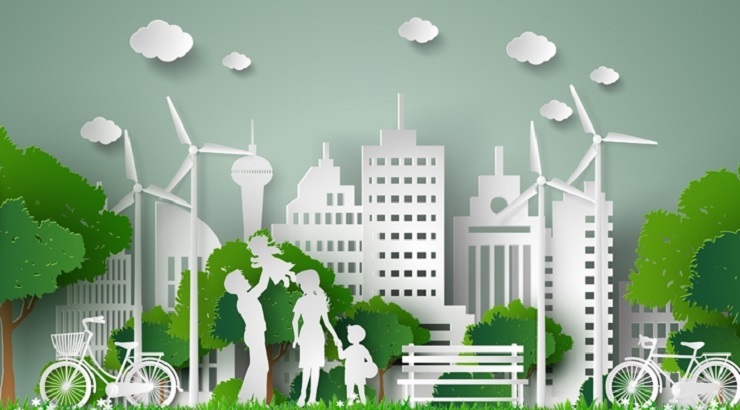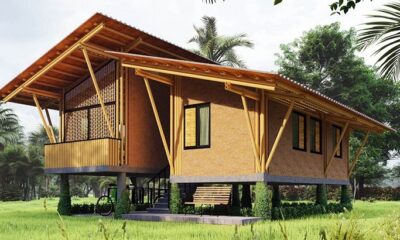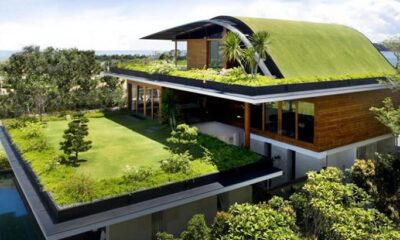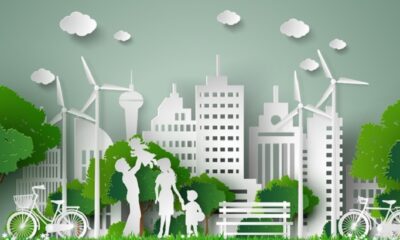Green Building
How to Build Sustainable Cities
More than 66% of humanity projected to live in urban areas by 2050.

In the next thirty years, more than two thirds of humanity is projected to live in urban areas with most of the urban population growth expected to happen in lower income nations.
With that in mind, there is an urgent need for planners to ensure that urban areas are inclusive, safe, sustainable and resilient enough to meet the anticipated population growth.
But what makes a city liveable? While there is no single magical bullet, cities can make themselves more habitable by adopting a range of social and technological measures.
Here are 10 ways to build more sustainable cities:
1. Clean energy
Although most cities can generate clean energy, their high level of power consumption means the metropolises are unlikely to be self-sufficient in terms of energy production.
However, cities can lower their carbon footprints by, among other things, converting sunshine into electricity; using timber from local forests to produce low-carbon energy for heating and electricity generation; and using solar to heat buildings and water.
Converting waste into energy is also a great step towards improving a city. The Indonesian city of Sodong, for example, has implemented an air-filled waste disposal system that uses pipes to suck trash from homes into processing centres that automatically sort the material to recycle and turn it into renewable energy.
RELATED: Inside Kenya’s small-scale renewable energy revolution
London Heathrow, one of the busiest airports in the world, uses “springy” tiles to harness the kinetic energy in foot traffic and convert it into electricity.
Such innovations can help cities to become more sustainable.
2. Efficient buildings
Buildings consume most of a city’s energy intake while emitting large quantities of carbon. Cities should encourage the design and construction of efficient buildings – which are often more cost-effective and functional compared to installation of costly devices for clean energy production.
Creating efficient buildings involves the insulation of walls, windows, and roofs, and operating energy-efficient lighting and heating systems.
Passive House in Darmstadt, Germany, is a great example of energy efficient building. The ultra-low energy house is so highly insulated that it requires no heating or cooling.
Singapore and New York have shown the world how small initiatives such as painting roofs white and planting trees can reduce city temperatures by up to 2°C – thereby cutting a city’s energy consumption.
In Scandinavian and eastern European countries, hot water for heating is distributed to buildings through insulated pipes underneath the streets. The water is heated using energy generated from extremely efficient power stations that generate both heat and electricity.
3. Efficient transportation
While vehicles, trains and aeroplanes facilitate the smooth running of a city, the transport systems can cause traffic congestion, poor air quality and gas emissions.
To minimise the number of cars on the road, some cities have formulated ideas that can be adopted in other parts of the world.
RELATED: How to Make Our Cities More Livable and Sustainable
The Scottish city of Edinburgh, for example, has developed one of the largest car-sharing clubs in the UK, which allows members to use cars only when they need to.
Singapore and London have designed high-quality bus and underground rail systems, as well as low-emission areas where only electric vehicles are permitted.
In Copenhagen, Denmark, cycle commuting is highly encouraged with cyclists given priority at traffic lights throughout the city.
4. Urban agriculture
The food we eat comes with a carbon footprint, which is worse if the produce travels hundreds of miles to reach us. It is therefore a great idea to encourage urban farming to ensure local sourcing of foodstuffs.
Urban farmers such as US-based Aero Farms are already embracing vertical farming solutions to produce food in cities. Vertical farming produces crops on stacked layers, often on skyscrapers, instead of on a single layer in either an open field or a greenhouse.
Advances in lighting and automation, as well as other factors such as reduced use of pesticides, enable vertical farmers to make higher profits than traditional farmers.
5. Sharing spaces
City residents around the world are reducing the carbon footprint of consumption through sharing of resources. It is increasingly common to find inhabitants engaging in carpooling, lodging rental and shared ownership of facilities such as gyms and lounges.
6. Design for social integration
Once considered the world’s most dangerous city, Colombian city of Medellin has transformed itself by focusing on architecture and design.
The city has adopted the use of shared spaces and improved public transport to blur economic boundaries and create a sense of connection among its residents.
7. Mobility on demand
Smartphone-assisted traffic management and car routing can reduce time and fuel wasted trying to navigate through congested cities.
Likewise, self-driving vehicles and carpooling can increase efficiency by maximising use of vehicles and reducing the need for space to park idle cars.
8. Nature-based solutions
Nature-based solutions to urban problems can help cities to tackle climate change while reducing disaster risks.
New York City’s greened rooftops and streets that can better manage storm water runoff and improve urban climate are a great example of natured-based solutions.
Another great example is China’s introduction of the concept of ‘sponge cities’, cities with open spaces that can soak up floodwater and prevent disaster in ecologically friendly ways.
9. Pocket parks
In densely populated cities such as San Francisco, local authorities have put in place small green spaces that help to increase green cover while providing recreation space to residents.
Most pocket parks re-use spaces that previously served other purposes — for example, rehabilitated street parking spaces or a public right-of-way that was earlier used for transportation.
10. Pervious concrete
Pervious concrete is a mixture of cement, coarse aggregate, water and admixture, with little or no fine aggregates. It is designed to allow water to penetrate the asphalt for absorption by the earth. This can help cities to tackle flash floods and worsening quality of water in river courses and so on.
Hailed as one of the most promising sustainable material today, pervious concrete has outstanding potential to counteract these adverse impacts while providing necessary structural integrity, thus supporting continued urbanization.












